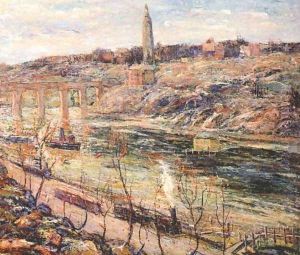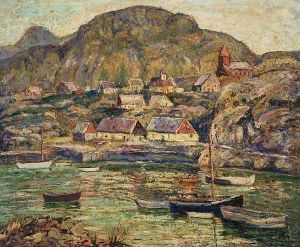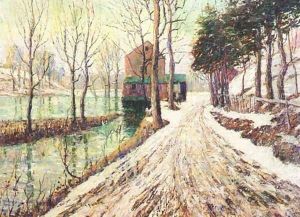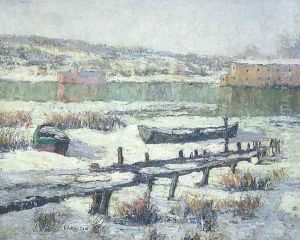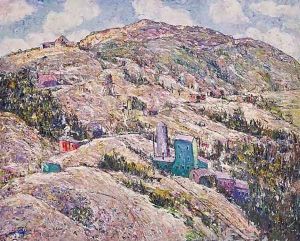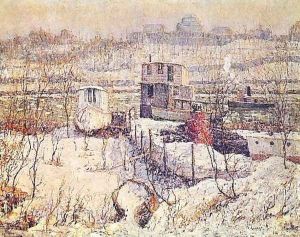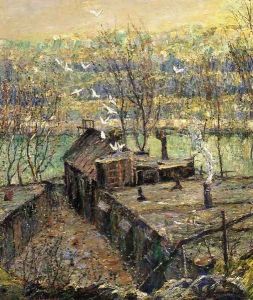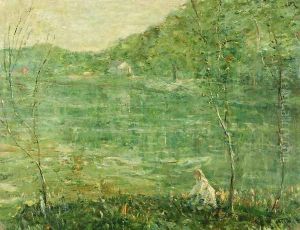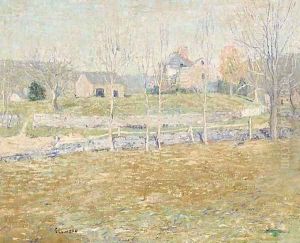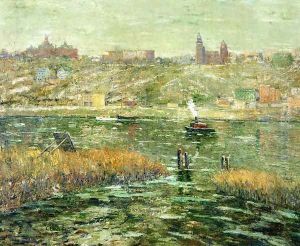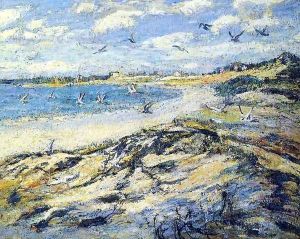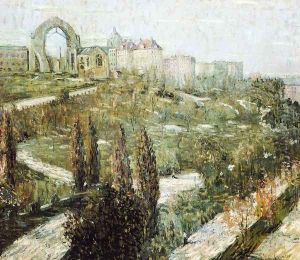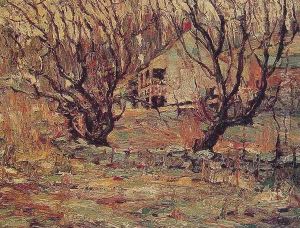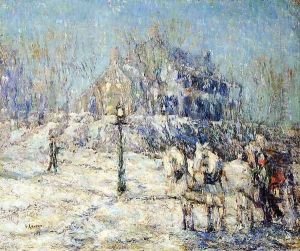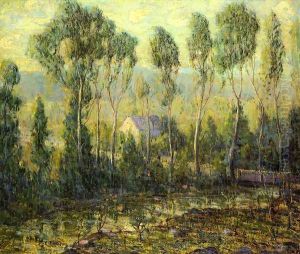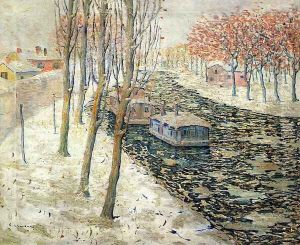Ernest Lawson Paintings
Ernest Lawson was a prominent American painter and a member of the group known as 'The Eight,' a collective of artists who also called themselves the Ashcan School. He was born on March 22, 1873, in Halifax, Nova Scotia, Canada, but his family soon moved to the United States, settling in Kansas City. Lawson showed an early interest in art and pursued his passion by studying at the Art Students League of New York. He continued his art education in France at the Académie Julian and was influenced by the French Impressionists, particularly Alfred Sisley.
Lawson's work is characterized by his distinctive use of color and light, often depicting landscapes and urban scenes. His technique involved applying thick layers of paint, which added a sense of texture and vibrancy to his work. Despite his Impressionistic style, Lawson's paintings often captured the grittier aspects of city life, aligning him with the Ashcan School's philosophy of portraying the reality of urban America.
During his career, Lawson received several awards, including a silver medal at the 1913 Panama-Pacific International Exposition. He was also an influential figure in the New York art scene, being a regular exhibitor at the National Academy of Design and an associate member of the National Academy in 1908, later becoming a full Academician in 1928.
Sadly, Lawson's later years were marred by financial difficulties and a decline in his artistic reputation. Despite this, he continued to paint until his death on December 18, 1939, in Miami Beach, Florida. Lawson's legacy is preserved through his contributions to American Impressionism and the Ashcan School, and his works are held in major collections across the United States, including the Metropolitan Museum of Art and the Smithsonian American Art Museum.

